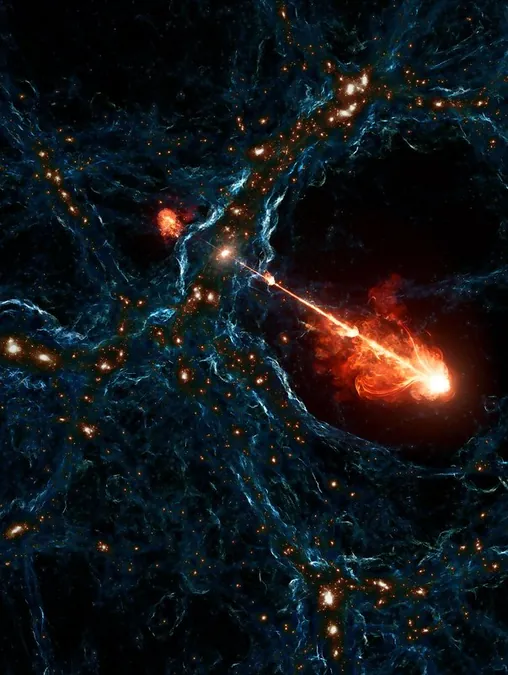
Astronomers Make Groundbreaking Discovery: Longest Black Hole Jets Ever Observed!
2024-09-21
In an astonishing revelation that blurs the lines between science and science fiction, astronomers have uncovered a supermassive black hole emitting jets that span a staggering 23 million light years—marking the longest jets ever detected! To visualize this celestial phenomenon, imagine placing 140 Milky Way galaxies end-to-end; that’s the incredible length of the jet emanating from this cosmic giant.
Understanding Black Holes
Black holes, those enigmatic entities of the universe, result from the gravitational collapse of massive stars at the end of their life cycles. When a star exhausts its nuclear fuel, it implodes under its own weight, forming a singularity—an infinitely dense point surrounded by an event horizon, beyond which nothing can escape, not even light itself. The presence of such mass profoundly distorts the fabric of space-time in their vicinity, creating fascinating yet dangerous environments.
The Jets of Black Holes
One of the remarkable characteristics of black holes is their powerful jets, which are high-speed streams of charged particles ejected from the regions around them. These jets originate not from the event horizon but rather from the accretion disk of gas and dust that spirals around the black hole. Although the exact mechanics of jet formation remain unclear, it seems that the immense gravitational forces, coupled with magnetic fields and the rotation of the gas disk, enable these jets to shoot out at velocities approaching the speed of light.
The Discovery of Porphyrion
The recent discovery, led by a team using the LOFAR (Low Frequency Array) radio telescope, nicknamed these jets "Porphyrion," after the mythological giant of Greek lore. This spectacular jet hails from a time when the universe was about 6.3 billion years old and is emitting energy equivalent to trillions of suns! For context, the famed Centaurus A, another well-known black hole, has jets that reach only about 10 Milky Way galaxies in length.
Implications for Cosmic Evolution
What makes this discovery even more groundbreaking is the implication it holds for cosmic evolution. Researchers theorize that if jets like Porphyrion were common in the early universe, they could have had a substantial influence on galaxy formation. These colossal jets might have connected and provided vital energy and matter to nearby galaxies, potentially accelerating their development. In contrast, jets observed in our current epoch seem relatively diminutive by comparison, raising questions about the dynamic processes that governed the universe's early formative years.
The LOFAR Survey
In their sweeping survey, the LOFAR team identified over 10,000 megajets, significantly more than the few hundred previously documented. This breakthrough came through a mix of rigorous manual analysis and advanced machine learning techniques, all while enlisting citizen scientists globally to aid in the data processing. The groundbreaking findings were published in the prestigious journal Astronomy and Astrophysics.
Future Observations
As for the fascinating Porphyrion, the astronomers have conducted follow-up observations using the Giant Metrewave Radio Telescope in Arizona and the W. M. Keck Observatory in Hawaii, confirming that it resides in a host galaxy located 7.5 billion light years away. Could this cosmic giant change our understanding of galaxy formation and evolution? Only time will tell!



 Brasil (PT)
Brasil (PT)
 Canada (EN)
Canada (EN)
 Chile (ES)
Chile (ES)
 España (ES)
España (ES)
 France (FR)
France (FR)
 Hong Kong (EN)
Hong Kong (EN)
 Italia (IT)
Italia (IT)
 日本 (JA)
日本 (JA)
 Magyarország (HU)
Magyarország (HU)
 Norge (NO)
Norge (NO)
 Polska (PL)
Polska (PL)
 Schweiz (DE)
Schweiz (DE)
 Singapore (EN)
Singapore (EN)
 Sverige (SV)
Sverige (SV)
 Suomi (FI)
Suomi (FI)
 Türkiye (TR)
Türkiye (TR)